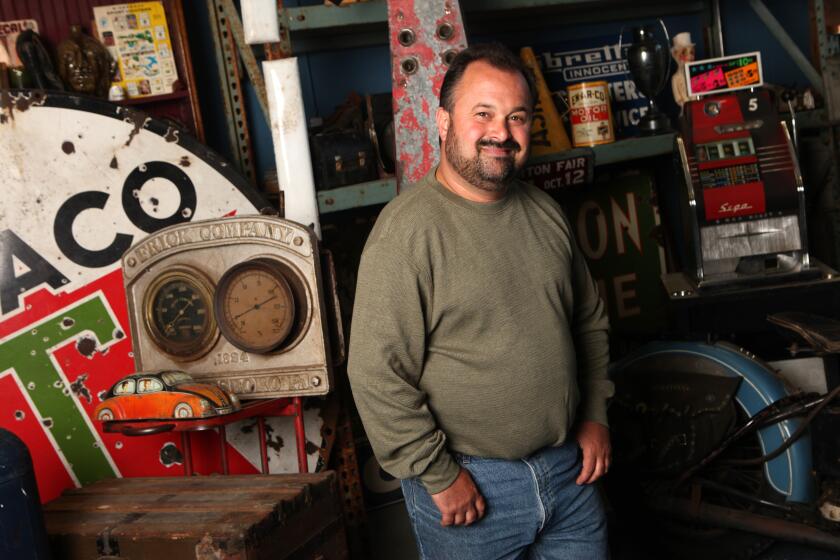Ridiculous and Sublime
Each year of television is the sum of many experiences. Instead of the routine, however, it’s the highs and lows that we recall. In that regard, heading the list for 1997 is a topic that should be no surprise:
HIGH--Princess Diana: Her death in Paris on Aug. 31 and subsequent memorializing turned out to be not only the biggest television story of 1997--what even approached it?--but also in some respects among the best covered, as that movable swarm, the U.S. media, jetted to Europe en masse to chronicle her extended eulogy and the investigation into the crash that took her life.
A kadzillion words were written about it. But it was TV that most vividly captured the regal, Old World pomp of her funeral amid royal decadence and the profound grief of Britishers everywhere over her death. As spectacle, it was simply first-rate, lacking only Alistair Cooke in an armchair to properly interpret it.
LOW--Princess Diana: Instead of dear old Alistair, unfortunately, we got fawning TV anchors and other smarmy, opportunistic journalists and commentators, most of them born-again Anglophiles who, as if the U.S. were still the Colonies, wrapped themselves in the Union Jack while trying to out-sob and out-grieve one another on the air.
As if the real Diana were insufficient, she was posthumously elevated by the media to unearned sainthood, forevermore to be linked with Mother Teresa, whose own death shortly after and reputation for good works flickered dimly beside the 1,000-watt halo granted the now mythic “princess of hearts.”
As these things do, Diana-mania acquired a heartbeat of its own that thumps mightily even today--witness her canonization in a current TV commercial for Time magazine that recalls her wedding, “when all the world was glad to be her subject.” That world would be Pluto, right?
HIGH--Ennis Cosby: There was no shortage of overblown coverage, either, regarding the Jan. 16 murder of Bill Cosby’s son, Ennis, just off the 405 Freeway in Los Angeles. The media, by the tone and sheer weight of their reporting, tended to value his life more than those of other murder victims merely because of his lineage.
Yet mitigating that was one fleeting, frozen moment captured on TV, when Cosby turned to reporters who had waited for him outside his residence in Manhattan and gave a four-word eulogy of Ennis that resonated a distraught father’s simple, honest, heartfelt eloquence: “He was my hero.” Nothing else needed to be said.
LOW--Marv Albert: It wasn’t enough that much of TV turned the titillating footnote of sportscaster Albert’s forceable sodomy trial into another trial of the decade, if not quite the century. Still worse: After Albert pleaded guilty to the lesser charge of assault and battery, he and his attorney embarked on a spin-control campaign that took them to the friendliest outreaches of the airwaves, where the usual celebrity-doting suspects, from Barbara Walters to Larry King, were only too happy to oblige with soft questions. It was the traditional TV symbiosis, with Albert getting to fuzz the facts of his case and reinvent himself as a solid citizen, in exchange for the TV hosts using his notoriety to attract viewers. The mutual back-scratchers’ deluxe.
HIGH--The KCBS-TV Channel 2 food fight: Long a bad seed of local news, Channel 2 this time made effective and appropriate use of hidden cameras to expose in November both intolerable conditions inside the kitchens of many Los Angeles-area restaurants and apparent laxity by the county health department in bringing offenders to heel.
It was a rare expose whose effect was felt immediately, making such a splash that one of Channel 2’s competitors, KABC-TV Channel 7, tried to cash in by running its own (feeble) story, “L.A.’s Cleanest Restaurants.” And another station, KTLA-TV Channel 5, sought to embarrass Channel 2 by throwing a spotlight on KCBS’ own eating facilities.
Critics accused Channel 2 of clobbering an easy, obvious target. If it was so easy and obvious, however, why didn’t other Los Angeles stations tackle it?
LOW--The KCBS-TV Channel 2 food fight: Unwilling to be burdened by integrity, Channel 2 reverted to character by constantly congratulating itself on the air and dragging this story out in such a cynical, opportunistic way that you’d think its intent from the start (gasp) was less public service than self-promotion during a ratings sweeps period.
HIGH--Program content ratings: Although much of the public seemed not to notice, the introduction of these program labels, ranging from TV-G (general audience) to TV-MA (mature audience)--with only NBC later failing to add further designations for sex, violence, suggestive dialogue and coarse language--was a landmark event. The ratings allow viewers to make more informed decisions about what they and their children view, and their effect will probably grow when they’re used in conjunction with the coming V-chip for TV sets.
LOW--JonBenet Ramsey: Six-year-old Ramsey was killed in Boulder, Colo., nearly a year ago, initiating a story that ever since has simmered on a front burner of TV news. This unsolved crime has fed its own cottage industry of rumormongers and smear artists and is handy to have around. When another hot spot dies down, TV inevitably returns to JonBenet.
Why did the nation’s newscasters become so interested in this crime--essentially a local story--when so many other child murders are relegated to obscurity? Because JonBenet was white, pretty, titled (“6-year-old beauty queen”), came from affluence and came with provocative videotape of her that could be replayed ad nauseam. Why does this story endure? By inflating it, TV has created a rationale for continuing to cover it, obsession breeding more obsession.
HIGH--”Don King: Only in America”: With Ving Rhames just smashing as famous boxing promoter Don King, this was flat-out the best TV movie of the year, adding luster to HBO’s reputation.
LOW--”The Last Don” and “Bella Mafia”: Absolutely the worst miniseries of the year. Their soaring ratings on CBS affirmed that Italian mobsters are a deal that American viewers find hard to refuse--even when the portrayals are gratuitously violent and cartoonish. How dim were these gangster men and gangster women? Is there an Italian word for “duh”?
HIGH--”Ellen”: Emerging from the closet as lesbians almost simultaneously last spring were Ellen DeGeneres, the actress, and Ellen Morgan, the character she plays on her ABC series, “Ellen.” The latter, especially, was a seminal moment in the maturity of mainstream TV, striking a blow at once for enlightenment and against ignorance and the myopic minority who insist that homosexuals either be hidden in the shadows or depicted as freaks and dangerous sexual predators. This mentally challenged crowd is terrified of “Ellen” because its gay protagonist, even with her sexual orientation, seems so . . . normal.
LOW--Howard Stern: While hitting the TV talk show circuit to promote his movie about his life, radio star Stern imitated the very phony, self-serving celebrity herd he’d spent much of his career castigating. This was not the slashing, outrageous Stern known to his listeners but a sugar-cubed version, a softer Stern whose purpose was to entice mainstream Americans to the box office. Stern’s two-faced road show hit farcical bottom with his mutual kiss-up on CNN with Larry King, someone he’d mercilessly ridiculed on radio. More mutual back-scratching.
HIGH--”Murphy Brown”: You have to applaud the bravery and tightrope skills of a sitcom, this one starring Candace Bergen on CBS, that is able to remain humorous while focusing on the very serious business of its protagonist’s coping with breast cancer.
LOW--”Pauly”: Has there ever been a sitcom more banal than this one from Fox that surfaced briefly last March like a groundhog before swiftly vanishing? Well, a case could be made for two other short-lived comedies from 1997, UPN’s mean-spirited “Social Studies” and the same network’s more recent “Head Over Heels.”
Nahhhhh. When it comes to imbecilic raunch, Pauly Shore’s series has no equals. Micro-miniskirted babe to the lazy Pauly: “I have bras that work harder than you.” Pauly: “Your bras may be workin’, but it looks like your panties took the day off.” Fortunately for television, “Pauly” soon took the millennium off.
HIGH--Documentaries: Three immediately come to mind--none from the major commercial networks, of course. The first, in May, was the last of a trilogy of Ofra Bikel’s stunning “Innocence Lost” documentaries on the PBS series “Frontline,” detailing a case of false accusations in North Carolina strikingly like the McMartin Pre-School debacle here in the 1980s.
More recently came “Liberty! The American Revolution,” that wonderful PBS three-parter about the birth of the United States, and “The Fifties,” a Canadian series on the History Channel that balanced entertainment and scholarship on a level rarely achieved by TV.
LOW--The missing stories: These are the significant happenings that local television stations either ignored or dismissed lightly--including the Los Angeles mayoral race--opting instead to dwell on the likes of Marv Albert and those freeway chases whose emphasis contributes to the dumbing down of society, to say nothing of the media that cover them.
The complete guide to home viewing
Get Screen Gab for everything about the TV shows and streaming movies everyone’s talking about.
You may occasionally receive promotional content from the Los Angeles Times.



